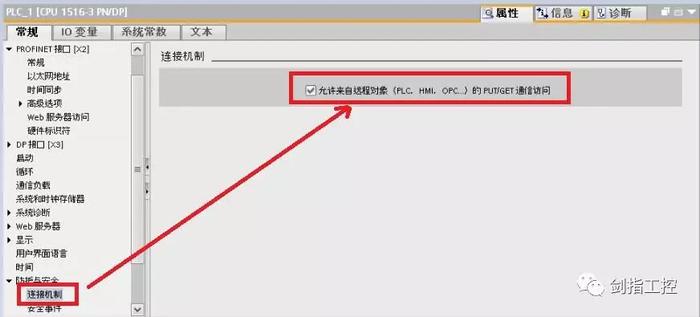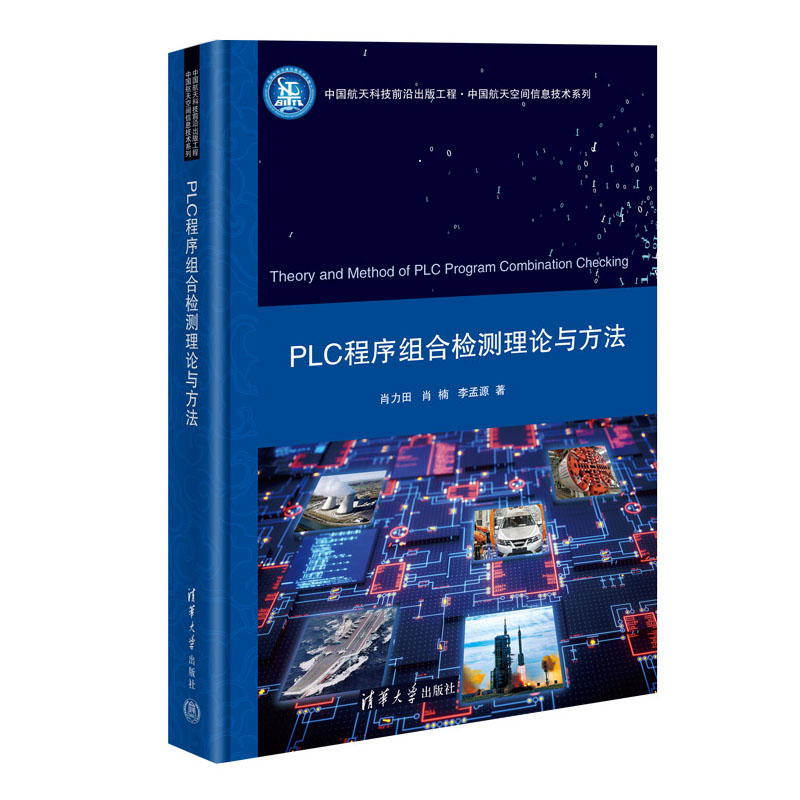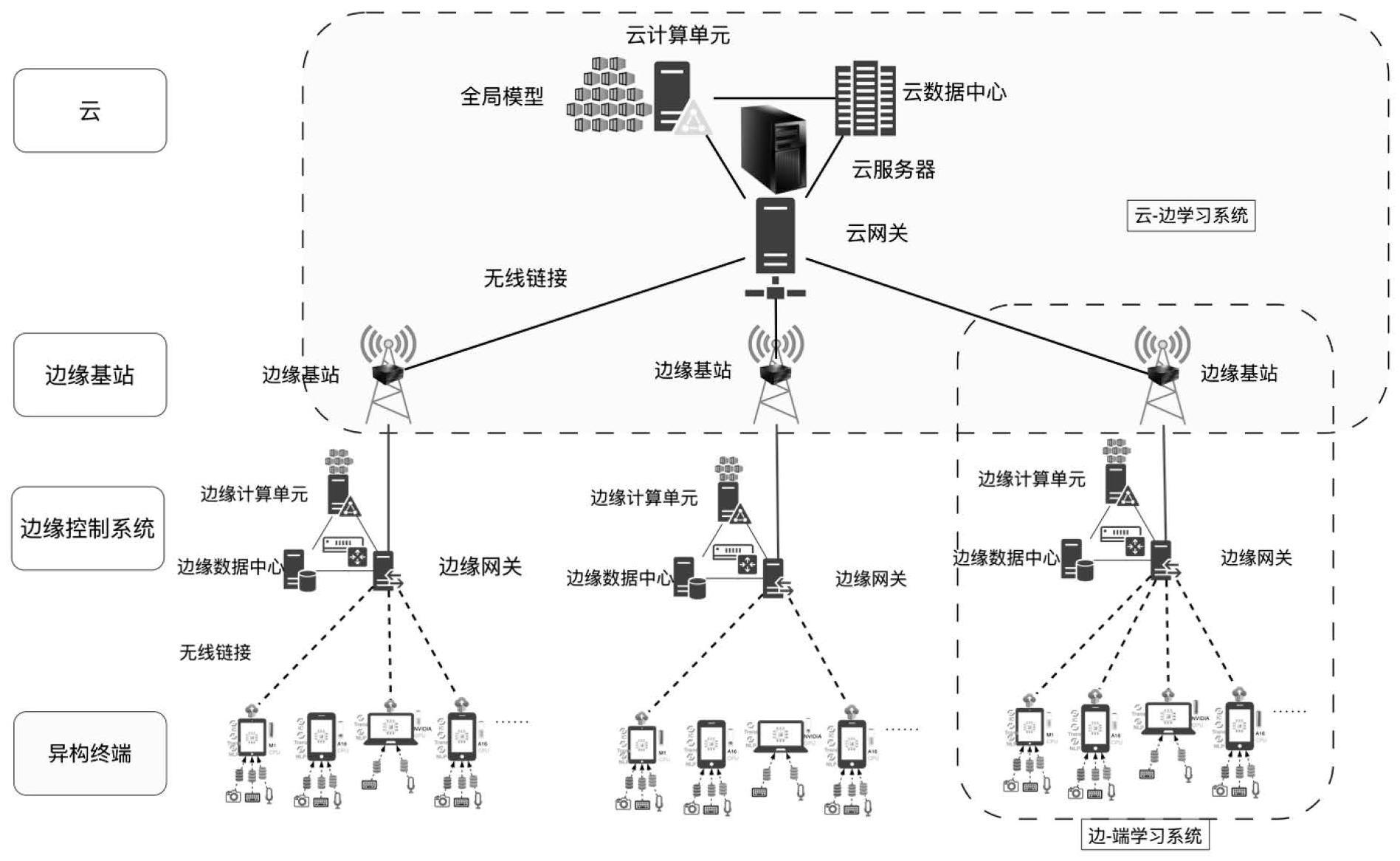
一、引言
随着科技的飞速发展,软件与编程在各行各业中的重要作用愈发凸显。
这其中,Step7程序因其卓越的性能和广泛的应用领域而备受关注。
与此同时,随着全球教育改革的深入推进,STEM教育(科学、技术、工程和数学教育)逐渐成为教育领域的重要发展方向。
本文将分别介绍Step7程序与STEM教育的基本概念,并探讨二者之间的关系及其在教育改革中的重要作用。
二、Step7程序概述
Step7程序是一种由Siemens公司开发的自动化编程软件,主要用于PLC(可编程逻辑控制器)编程。
它广泛应用于工业控制领域,如机器人控制、生产线自动化等。
Step7程序具有强大的功能,如设备组态、网络配置、编程调试等,为工业自动化提供了强大的支持。
随着工业4.0的推进,Step7程序的重要性愈发凸显。
三、STEM教育:一种新的教育理念
STEM教育是一种新兴的教育理念,强调科学(Science)、技术(Technology)、工程(Engineering)和数学(Mathematics)的跨学科融合。
STEM教育的目标是培养学生的创新精神与实践能力,以适应快速发展的科技产业。
STEM教育强调实践与应用,鼓励学生通过动手实践来解决问题,从而培养学生的科学素养和技术能力。
四、Step7程序与STEM教育的关联
Step7程序在教育领域的应用,正是STEM教育理念的生动体现。
通过学习Step7程序,学生可以了解工业自动化领域的技术知识,这是STEM教育中技术领域的重要内容。
学生通过学习Step7程序,可以掌握实际的编程技能,这是工程领域的重要组成部分。
学生在学习和应用Step7程序的过程中,需要运用数学知识进行分析和计算,这也是STEM教育中数学元素的重要体现。
因此,学习Step7程序不仅可以提高学生的技术能力,还可以培养学生的工程思维和问题解决能力,有助于实现STEM教育的目标。
五、Step7程序在STEM教育中的应用
1. 理论教学:在STEM教育中,可以通过教授Step7程序的相关理论知识,让学生了解工业自动化领域的基本原理和技术。
2. 实践操作:学生可以在实验室或实训场所进行Step7程序的实践操作,通过实际的项目或案例,掌握编程技能和网络配置等关键技术。
3. 竞赛活动:通过组织编程竞赛、机器人竞赛等活动,激发学生的学习兴趣和创新能力,培养学生的团队协作和竞争意识。
4. 校企合作:学校可以与相关企业合作,为学生提供实习和就业机会,让学生在实际的工作环境中了解和应用Step7程序,提高职业素养和就业竞争力。
六、Step7程序与STEM教育的重要性
Step7程序与STEM教育的结合,对于培养学生的技术素养和工程能力具有重要意义。
这种结合可以帮助学生了解和应用最新的技术手段,提高解决实际问题的能力。
这种结合可以培养学生的创新精神和团队合作精神,提高学生的综合素质。
最后,这种结合可以帮助学生适应快速发展的科技产业,提高就业竞争力。
七、结语
Step7程序与STEM教育的结合是教育改革的重要方向之一。
通过学习和应用Step7程序,学生可以了解和应用工业自动化领域的技术知识,提高技术素养和工程能力。
同时,这种结合还可以激发学生的学习兴趣和创新能力,提高学生的综合素质和就业竞争力。
因此,我们应该重视Step7程序在STEM教育中的应用和推广。
音乐术语里的pattern是什么意思?
个人理解就是中文教材里说的五种指型,如Mi,Re指型等等,可以简单认为对应英文的Pattern。 英文分的很细,有Major Scale Patern, Minor Scale Pattern,不止中文的5种指型。 推荐看一看《Guitar practises for dummies》
键盘乐器里的Diminished Chords(Dim)是什么意思?
减和弦增和弦关于音乐的英语词汇alto 男高音,女低音 tenor 次中音 baritone 上低音,男中音 bass 低音 soprano 女高音 mezzo-soprano 女次高音 sharp 高半音符号,升号 flat 调号 natural (sign) 本位号 staff, stave 五线谱 A,B,C,D,E,F,G 唱名la,si,do,re,mi,fa,sol G clef, treble clef 高音谱号 F clef, bass clef 低音谱号 C clef, tenor clef, alto clef 中音谱号 semibreve 全音符(美作:whole note) minim 二分音符(美作:halfnote) dotted crotchet 四分音符(美作:dotted note,quarter note) quaver 八分音符(美作:eighth note) semiquaver 十六分音符(美作:sixteenth note) demisemiquaver 三十二分音符(美作:thirty-second note) hemidemisemiquaver 六十四分音符(美作:sixty-fourth note) rest 休止符 crotchet rest 四分休止符(美作:quarter rest) semitone 半音 pause 休止 time, bar 拍子 rhythm 节奏 three-four time 三四拍子 syncope, syncopation 切分音 tone 音程 pitch 基音音乐 major key 大调 minor key 小调 scale 音阶 arpeggio 琶音 solfeggio 视唱 solmization 阶名唱法 diapason, range 音域 tuning fork 音叉 metronome 节拍器 chord 和弦,谐音 cadence 调音 counterpoint 多声部音乐 lyrics, words 歌词 score 总谱,乐谱 orchestra 乐队 conductor 乐队指挥 baton 乐队指挥棒 band 管乐队 solo 独奏,独唱 duet, duo 二重奏,二重唱 trio 三重奏,三重唱 quartet, quartette 四重奏,四重唱 quintet 五重奏,五重唱 choir, choral society 合奏,合唱 vibration 振动 sound 音 tone 音(乐音) musical tone 乐音 noise 噪音 acoustics 声学 psychoacoustics 心理声学 frequency 频率 intensity 强度 time 时间 wave form 波形 pitch 音高 loudness 响度 duration 时值 timbre 音色 (tone color or quality) tuning fork 音叉 pure tone 纯音 complex tone 复音 (composite tone) overtone(s) 泛音 (aliquot tone, harmonics, flageolet tone 即upper partials) overtone series 泛音列 partial(s) 分音(partial tone) fundamental(tone) 基音 (first partial) step 音级(scale step, degree) accidental(s) 变音记号 sharp 升号 flat 降号 double-sharp 重升号 double-flat 重降号 nature 还原号 intonation 音准 octave 八度 range 音域(compass) (voice) register 音区 small c 小字组c great C 大字组C contra C 大字二组C unaccented octave 小字组 one-lined octave 小字一组 (one-line) two-lined octave 小字二组 (two-line) three -lined octave 小字三组(three-line) four-line octave 小字四组 (four-line) temperament 乐律 tempered scale 平均律 (equal temperament) just intonation 纯律 pitch name 音名 enharmonic notes 等音 (whole) tone 全音 half-tone 半音 natural half-tone 自然半音 natural tone 自然全音 chromatic tone 变化全音 chromatic half-tone 变化半音 notation 记谱法 staff 乐谱 treble clef 高音谱号 bass clef 低音谱号 clef 谱号 (G clef, F clef, C clef) note(s) 音符 rest(s) 休止符 breve 二全音符 semibreve 全音符 (whole note,美) minim 二分音符 (half note,美) crotchet 四分音符(quarter note,美) quaver 八分音符 (eighth note,美) semiquaver 十六分音符(sixteenth note,美) demisemiquaver 三十二分音符 (thirty-second note,美) hemidemisemi quaver 六十四分音符 (sixty-fourth note,美) dot 附点 double dot 复附点 dotted note 附点音符 dotted rest 附点休止符 score 总谱 leger line(s) 加线 (ledger line(s)) head 符头 stem 符干 hook 符尾(tail) space 间 line 线 tie 延音线 pause 延长号(hold, fermata) bar 小节 (bar line小节线,measure) legato 连音,连奏 staccato 断音,断奏 sostenuto 持音 trembolo 震音 glissando 滑音 relative pitch 相对音高(听觉) absolute pitch 绝对音高(听觉) sight-singing 视唱 fixed-do 固定唱名法 movable-do 音调唱名法 lyra 乐徽 rhythm 节奏 rhythmic pattern 节奏型 accent 重音 syncopation 切分音 meter 拍子 (time) duple meter(s) 二拍子 (2/2,2/4,2/8) triple meter(s) 三拍子 (3/2,3/4,3/8) quadruple meter(s) 四拍子 (4/2,4/4,4/8) common meter 普通拍子 (4/4) simple meter(s) 单拍子 compound meter(s) 复拍子 compound duple meter(s) 复二拍子(6/2,6/4,6/8) compound triple meter(s) 复三 拍子(9/4,9/8) compound quadruple meter(s) 复四拍子 (12/4,12/8,12/16) quintuple meter 五拍子 time signature 拍号 multi-meter 变化拍子 irregular meter (不规则)混合拍子(7/4,11/7) Metronome 节拍机 (M.M.=Malzel’s ~) duplet 二连音 triplet 三连音 quadruplet 四连音 quintuplet 五连音 sextuplet 六连音 septuplet 七连音 tempo 速度 dynamics 力度 tempo mark(s) 速度标记 dynamic mark(s) 力度标记 mode 调式(狭指教会调式;广指调式) scale 音阶 key 调 tonality 调性 atonality 无调性 bitonality 双重调性 polytonality 多调性 major 大调 minor 小调 key signature 调号 pentatonic 五声的 natural 自然的 melodic 旋律的 harmonic 和声的 whole-tone 全音的 chromatic 半音的 ascending 上行 descending 下行 scale degree (调式)音级 tonic(I) 主音,主和弦 supertonic(II) 上主音,上主和弦 mediant (III) 中音,中音和弦 subdominant(IV) 下属音,下属和弦 dominant(V) 属音,属和弦 submediant(VI) 下中音,下中音和弦 (super-dominant) leading tone(VII) 导音,导和弦 (subtonic) broken chord 分解和弦 altered chord 变和弦 false chord 假和弦 resolution 解决 relative keys 关系大小调 parallel keys 同主音调 interval 音程 melodic interval 旋律音程 harmonic interval 和声音程 root 根音(fundamental) scale step 音级(音级数:number of scale step) simple interval 单音程 compound interval 复音程 enharmonic intervals 等音程 inversion 转位(complement) minor 小(音程) major 大(音程) perfect 完全,纯(音程) augmented 增(音程) diminished 减(音程) double-augmented 倍增(音程) double-diminished 倍减(音程) unison 同度,一度(prime) second 二度 third 三度 fourth 四度 fifth 五度 sixth 六度 seventh 七度 octave 八度 ninth 九度 tenth 十度 eleventh 十一度 twelfth 十二度 tri-tone 三全音 diatonic interval 自然(音程) chromatic interval 变化(音程) consonant 协和(音程、和弦) dissonant 不协和(音程、和弦) chord 和弦 triad 三和弦 major triad 大三和弦 minor triad 小三和弦 diminished triad 减三和弦 augmented triad 增三和弦 root position 原位 first inversion 第一转位 second inversion 第二转位 third inversion 第三转位 sixth chord 六和弦 sixth-four chord 四六和弦 seventh chord 七和弦 dominant seventh chord 属七和弦 diminished seventh chord 减七和弦 ninth chord 九和弦 augmented sixth chord 增六和弦 Added-sixth chord 加六度和弦 fourth chord 四度和弦 tone-cluster 音簇 harmony 和声学 harmonic analysis 和声分析 functional harmony 功能和声 modulation 转调 transposition 移调 chromatic scale 半音阶 diatonic scale 自然音阶 passing tone 经过音 neighboring tone 辅助音(auxiliary tone,upper or lower) anticipation 先现音 suspension 延留音 ornament(s) 装饰音 trill 颤音 mordent 波音(upper mordent) inverted mordent 逆波音(lower mordent; 早期称Schneller) double mordent 复波音 inverted turn 回音 arpeggio 琶音 melody 旋律 repetition 重复 unity 统一 variety 变化 variation 变奏 theme with variation 主题与变奏 comparison 对比 augmentation 展开 climax 高潮 sequence 模进 melodic sequence 旋律模进 harmonic sequence 和声模进 melodic progression 旋律进行 melodic contour 旋律轮廓 motive 动机 development 发展 thematic material 主题材料 phrase 乐句 phrasing 分句 period 乐段 cadence 终止 perfect cadence 完全终止 imperfect cadence 不完全终止 half cadence 半终止 authentic cadence 正格终止 plagal cadence 变格终止 interrupted cadence 阻碍终止 deceptive cadence 伪终止 musical form 曲式 one-part form 一段式,一部曲式 binary form 二段式,二部曲式(AB) rounded binary form (有再现的)二段式 ternary form 三段式,三部曲式(ABA) four-part form 四段式 five-part form 五段式 variation form 变奏曲式(A,A1,A2,A3…)strophic form 分节歌(a,a,a,a …) rondo form 回旋曲式(ABACA) sonata form 奏鸣曲式 exposition 呈示部 development 展开部 recapitulation 再现部 rondo sonata form 回旋奏鸣曲式 movement 乐章 prelude 前奏(曲) interlude 间奏(曲) coda 尾声 trio 三声中部 cadanza 华彩乐段 musical form 体裁 reduction 改编(缩编) trio 三重奏 quartet 四重奏 quintet 五重奏 opera 歌剧 ballet 芭蕾 chorus 合唱 choir 合唱团 choral music 合唱音乐 cantata 康塔塔 mass 弥撒 oratorio 清唱剧 passion 受难曲 symphony 交响曲 concerto 协奏曲 sonata 奏鸣曲 sonatina 小奏鸣曲 band 军乐队 band music 军乐 etude 练习曲 march 进行曲 jazz 爵士乐 overture 序曲 ballata 叙事曲 inter mezzo 间奏曲 waltz 圆舞曲,华尔兹 allemande 阿勒曼德 courante 库朗特 sarabande 萨拉班德 gigue 吉格 bourree 布列 polonaise 波洛涅兹 tarantella 塔兰台拉 govotte 加沃特 chaconne 恰空 passacaglia 帕萨卡利亚 capriccio 随想曲 fantasia 幻想曲 lullaby 摇篮曲 tango 探戈 habanera 哈巴涅拉 madrigal 牧歌 choral 众赞歌 reguiem 安魂曲 symphonic poem 交响诗 toccata 托卡塔 serenade 小夜曲 nocturn 夜曲 rhapsody 狂想曲 minuet 小步舞曲 recitative 宣叙调 aria 咏叹调 songs without word 无词歌 invention 创意曲 scherzo 谐谑曲 mazurka 玛祖卡 polka 波尔卡 fox trot 狐步舞 blues 布鲁斯 rumba 伦巴 disco 迪斯科 suite 组曲 fugue 赋格 instrumental music 器乐 musical instrument 乐器 instrumentation 乐器法 orchestra 管弦乐队 orchestration 配器法 conductor 指挥 concert master 首席 podium 指挥台 wood wind instruments 木管乐器 piccolo 短笛 flute 长笛 oboe 双簧管 clarinet 单簧管(黑管) bass clarinet 低音单簧管 bassoon 大管(巴松) contrabassoon 低音大管 English horn 英国管 brass wind instruments 铜管乐器 French horn 圆号,法国号 trumpet 小号 cornet 短号 trombone 长号 tuba 大号 bass tuba 低音大号 double bass tuba 倍低音大号 tenor tuba 次中音大号 bass 低音号 saxophone 萨克斯管 euphonium 尤风宁号 percussion(s) 打击乐 kettle drum 定音鼓 bass drum 大鼓 tenor drum 中鼓 side drum 小鼓 triangle 三角铁 chimes 排钟 marimba 玛林巴 tubular bells 管钟 glockenspiel 钟琴 vibraphone 颤音琴 castanets 响板 whip 鞭响器 rattle 摇响器 anvil 乐砧 tambourine 铃鼓 tabor 塔波鼓 bongo 邦戈鼓 gong 锣 temple block 木鱼 wood block 南梆子,盒梆 cymbal 钹 harp 竖琴 xylophone 木琴 piano 钢琴 pedal 踏板 stringed instruments 弦乐器 violin 小提琴 viola 中提琴 cello 大提琴 double bass 低音提琴 guitar 吉他 lute 疏特琴 harpsichord 拨弦古钢琴 clavier (18世纪)键盘乐器 organ 风琴 pipe organ 管风琴 accordion 手风琴 keyboard 键盘(乐) vocal music 声乐 bel canto 美声 a cappella 无伴奏合唱 voice 人声,声部 soprano 女高音 coloratura soprano 花腔女高音 lyric soprano 抒情女高音 dramatic soprano 戏剧女高音 mezzo soprano 次女高音,女中音 tenor 男高音 dramatic tenor 戏剧男高音 bariton 男中音 bass 男低音 unison 齐奏(唱) solo 独奏(唱) duet 二重奏 ensemble 合奏(团体) stage 舞台 theater 剧场,戏剧 Renaissance 文艺复兴 Rococo 洛可可 Baroque 巴洛克 Classicism 古典主义 Romanticism 浪漫主义 Impressionism 印象主义 Nationalism in music 民族乐派 Anti- impressionism 反印象主义 Realism 现实主义 Serialism 序列主义 Primitivism 原始主义 Expressionism 表现主义 Microtonalism 微分音主义 Neoclassicism 新古典主义 Structuralism 结构主义 Concrete Music 具体音乐 Accidentalism 偶然主义 Minimalism 省略(简约)主义 Pointillism 点描派 monophonic music 单声部音乐 homophony 主调 homophonic music 主调音乐 polyphony 复调 polyphonic music 复调音乐 counterpoint 对位 program music 标题音乐 absolute music 纯音乐,非标题音乐 abstract music 抽象音乐
急求机械专业相关英文论文(带中文翻译)
中国是世界上机械发展最早的国家之一。 中国的机械工程技术不但历史悠久,而且成就十分辉煌,不仅对中国的物质文化和社会经济的发展起到了重要的促进作用,而且对世界技术文明的进步做出了重大贡献.传统机械方面,我国在很长一段时期内都领先于世界。 到了近代由于特别是从18世纪初到19世纪40年代,由于经济社会等诸多原因,我国的机械行业发展停滞不前,在这100多年的时间里正是西方资产阶级政治革命和产业革命时期,机械科学技术飞速发展,远远超过了中国的水平。 这样,中国机械的发展水平与西方的差距急剧拉大,到十九世纪中期已经落后西方一百多年。 新中国建立后特别是近三十年来,我国的机械科学技术发展速度很快。 向机械产品大型化,精密化、自动化和成套化的趋势发展。 在有些方面已经达到或超过了世界先进水平。 总的来说,就目前而言中国机械科学技术的成就是巨大的,发展速度之快,水平之高也是前所未有的。 这一时期还没有结束,我国的机械科学技术还将向更高的水平发展。 只要我们能够采取正确的方针、政策、用好科技发展规律并勇于创新,我国的机械工业和机械科技一定能够振兴,重新引领世界机械工业发展潮流。 就小型夯实机械而言:上世纪60年代以前,我国小型夯实机械非常缺乏,很多小型场地的夯实基本上采用人工夯实。 上世纪60年代初期,长沙建设机械研究所与北京建筑工程学院等单位合作,在群众性技术革新成果的基础上总结发明了具有中国特色的蛙式夯实机,1962年获国家科技发明奖。 蛙式夯实机结构简单,维修、使用方便,很快成为我国60年代夯实机械的主导产品。 据不完全统计蛙式夯实机累计产量达到多台,在我国经济建设中发挥了重要作用。 70年代以后,蛙式夯实机逐渐被性能更先进的振动冲击夯和振动平板夯所替代,目前蛙式夯实机已经很少,基本被淘汰。 1964年,长沙建设机械研究所开发了HB120型内燃式夯实机,开始由上海工程机械厂生产,后来主要由津市洞庭工程机械厂生产,年产量200台左右。 80年代,内燃式夯实机产品质量有较大提高,曾出口东南亚和非洲地区。 90年代以后,内燃式夯实机产销售量也在逐渐减少,目前只有少数小型民营企业生产。 1977年,长沙建设机械研究所和柳州市建筑机械厂开发了我国第一台HZR250型和HZR70型振动平板夯,这两种产品分别于1979 年和1982年通过了由建设部组织的鉴定。 随后义乌建筑机械厂、四平建筑机械厂、安阳振动器厂、津市洞庭工程机械厂等多家企业都开始生产振动平板夯。 1986年长沙建设机械研究所又开发了较大的HZR450型振动平板夯。 上世纪90年代以后,振动平板夯在我国有了较快的发展,产品品种、规格和生产企业增多,国外的振动平板夯陆续进入中国市场。 1983年,长沙建设机械研究所和湖北振动器厂联合开发了我国第一台HZR70型振动冲击夯,1984年通过了由建设部组织的鉴定,1985年获建设部科技进步三等奖。 由于振动冲击夯具有压实效果好、生产率高、体积和重量小、轻便灵活等突出特点,深受用户欢迎,得到了迅速的推广使用,并很快发展到资江机器厂、新乡第三机床厂和津市洞庭工程机械厂等几十家企业生产。 振动冲击夯虽然比振动平板夯开发晚,但发展速度、产销量和使用广泛性比振动平板夯大得多,目前已成为我国夯实机械中产销量最大的主导产品。 上世纪90年代以后,国外的振动平板夯陆续进入中国市场。 振动冲击夯和振动平板夯在我国的成功开发,不仅为我国建设施工部门提供了性能先进的夯实机械,取得了良好的经济效益和社会效益,而且使我国夯实机械技术向前跨进了一大步,缩短了与世界先进水平的差距,促进了我国压实机械的发展。 就机械加工而言:热加工 铸造 据考古发现,在北京平谷、昌平、房山等处曾出土了公元前16世纪(商代)的青铜礼器。 明永乐年间(1403~1424年),北京制造出享誉世界的明永乐大铜钟(46.5吨)和钟楼大铜钟(63吨)及铁钟(25吨),采用分炉熔化、地坑造型和陶范法铸造。 20世纪50年代以前,北京在铸造上采用粘土砂手工造型。 1955年,北京第一机床厂开始采用漏模造型、双面模型型板及铁型板和标准砂箱造型。 1965年,开始采用塑料模型。 1980 年,北京市机电研究院与北京玛钢厂研制成功工频无芯塞杆底注式保温浇注电炉。 1982年,该院与北京机床铸造二厂研究成功冲天炉风口吹氧技术。 1985~1988年,北京机床研究所试验成功浮动端面密封环的压力铸造工艺。 锻压 1959年,北京第二通用机械厂(后改名北京重型机器厂)建成2500吨水压机。 1971年,该厂制造出6000吨水压机,这是当时北京最大的锻压设备。 1968~1979年,北京起重机器厂先后采用300吨油压机和2000吨油压机制造出起重机吊臂和大型覆盖件。 80年代,北京市机电研究院和北京市模具中心研制出一系列高精度多工位冲裁模具,接近或达到进口模具水平,改变了北京精密冲裁模具依赖进口的局面。 热处理 1949年前,北京已采用电炉、盐溶炉、热电偶等手段进行零件退火、回火、淬火、正火、调质、渗碳等热处理。 1956年,北京第一机床厂开始采用高频感应淬火。 1961年,北京第二机床厂开始采用气体氮化淬火。 1969年,北京量具刃具厂开始采用光亮淬火。 1978年,北京机床研究所研究完成机床导轨表面接触淬火工艺及设备、淬火质量检查技术条件的研究。 1979年,铁道科学研究院和中国科学院力学研究所等合作完成大功率柴油机缸套表面的激光改性处理的研究。 1979年,北京市机电研究院研制成功千瓦级二氧化碳激光器,并于80年代初分别应用于汽缸套和邮票印刷设备的激光热处理。 其中,清华大学、北京市机电研究院、北京邮票厂共同完成邮票厂七色机打孔器表面激光强化研究。 1984~1990年,北京市热处理研究所研究成功真空热处理、气体渗碳微机控制技术(与北京航空航天大学合作)、稀土软氮化、粉末冶金制品表面强化、煤油加甲醇小滴量法微机可控渗碳、固体渗硼、渗碳过程微机辅助工艺设计及跟踪控制系统等热处理新技术,并应用于生产。 焊接与切割 1949年,北京已有气焊、电弧焊及氧乙炔火焰切割等手工作业。 1963年,北京金属结构厂与一机部机械科学研究院合作开发出钨极氩弧焊,并实现了氮气等离子切割不锈钢。 1964年,用直流钨极氩弧焊及焊丝合金化技术解决了核工业用倾斜式电解糟纯镍焊接。 1966年,北京金属结构厂开发出了使被焊球体旋转的埋弧自动焊。 1968年,该厂开始以液化石油气代替乙炔切割。 80年代初,清华大学发明了新型MIG焊接电弧控制法,在控制电弧技术上取得突破。 80年代初,北京城建设计院等完成液化石油气移动式气压焊轨技术的研究和应用。 1990年,北京金属结构厂开始采用数控精密切割和具有光电跟踪及数控寻踪读入自动编程的大功率等离子切割技术。 可见,我国机械发展在近代发展其迅速。 China is the worlds first national machinery development. Chinese mechanical engineering technology not only has a long history and splendid achievements in Chinese is not only the material culture and social economic development plays an important role in the world, and to promote the progress of civilization, technology has made great contribution to Chinese traditional machine. And in a long period ahead in the world. In modern times, especially from the early 18th century, due to the nineteen forties, due to the economic and social reasons, such as the China machinery industry, stagnation, in the 100 years is western bourgeois political revolution and industrial revolution, mechanical science and technology is developing rapidly, and far more than the level of China. So, China mechanical development level and the western gap widens, sharply to the 19th century middle behind western one hundred the founding of new China, especially in the past 30 years, our countrys mechanical science and technology development speed. To the mechanical product large-scale, precision, automation and discusses the trend of development. In some aspects has reached or exceeded the world advanced level. Generally speaking, currently China mechanical science and technology achievement is huge, developing fast, high level of unprecedented. In this period, China has no end of mechanical science and technology will develop to a higher level. As long as we can adopt the correct policy, with good technology development and innovation, our machinery industry and mechanical technology can revitalize, leading to the development trend of mechanical small ramming machinery:In the 1960s, China mechanical very small tamp lack, many small venues ramming basically USES artificial 1960s, changsha construction machinery institute and Beijing architectural engineering institute, etc., the technical innovation achievements in mass on the basis of summing up Chinese characteristic invented the breaststroke ramming machine, 1962 exceeded national science and technology. The breaststroke ramming machine structure is simple, easy to use and maintenance in 1960s, soon became the dominant products to consolidate machinery. According to not complete count breaststroke tamp cumulative yield reached more than 50,000 machine, in the economic development of our country has played an important role. Since 1970s, the breaststroke ramming machine was gradually more advanced performance of vibration shock ram and vibrating plate ram, now replaced by laying machine has rarely breaststroke, basically be 1964, changsha construction machinery institute HB120 developed movable type, type of Shanghai began laying machine, engineering machine production mainly by tianjin municipal later, annual production engineering machinery dongting about 200. In the 1980s, movable type ramming machine product quality has increased greatly, have exported to southeast Asia and Africa. Since 1990s, internal-combustion type ramming machine production sales, and gradually decreased in only a few small private enterprise 1977, changsha construction machinery factory buildings and developed in liuzhou HZR250 type and the HZR70 type vibrating plate ram, these two kinds of products in 1979 and 1982 passed by the ministry of construction of the organization. Then yiwu building construction machinery factory, siping, anyang vibrators factory, tianjin municipal engineering machinery dongting and other enterprises have started producing vibrating plate ram. In 1986, changsha construction machinery research and develop a larger HZR450 type of vibrating plate ram. Since 1990s, vibrating plate ram in our country has developed very quickly, varieties of products, specifications and increase production enterprises, foreign vibrating plate ram gradually to enter the Chinese 1983, changsha construction machinery institute and the joint development of hubei vibration in the first HZR70 type vibration shock ramming, 1984, passed by the ministry of construction, organization construction technology progress in 1985 won prizes. Due to the vibration impact compaction result has good ramming, productivity, high volume and weight of small, lightweight flexible outstanding characteristics, deeply user etc, obtained a rapid promotion, and soon ZiJiang development to the factory, xinxiang municipal engineering machine tool plant and tianjin dozens of dongting production factory etc. Vibration shock ramming although than vibrating plate ram, but later development speed of development, production and use of extensive than vibrating plate ram, has become the largest in China in the ramming machinery products. Since 1990s, foreign vibrating plate ram gradually to enter the Chinese shock ramming and vibrating plate ram the successful development in our country, not only for our construction department provides advanced performance of mechanical, laying have achieved good economic benefit and social benefit, and make our ramming mechanical technology into a big step forward, shorten the gap with the advanced world level, promoting the development of compaction mechanical processing:According to the archaeological discovery, hot-working casting in Beijing pinggu, changping and so have proved that the 16th century BC shang dynasty (bronze objects. Ming yongle (1403-1424 years), Beijing produce world-renowned Ming yongle great 3-ton bell made (46.5 tons) and tower (63 tons of great 3-ton bell made of iron clock (25) and the furnace of melting, pit TaoFan model and method of casting. In the 1950s, Beijing based on clay sand castings in manual. In 1955, Beijing first machine tool plant began using leakage mould modelling, double-sided model and iron plate type plate and standard sand box modelling. In 1965, start using plastic model. In 1980, the institute and Beijing municipal electrical factory has successfully developed line frequency coreless bathroom plug stem bottom note type electric insulation casting. In 1982, hospital and Beijing the casting machine research cupola tuyere oxygen blowing technology. 1985-1988, Beijing institute of machine of floating end face seal ring by die successful test pressure casting 1959, Beijing second metalforming machinery general factory changed (Beijing) built 2500 ton heavy-duty hydraulic press. In 1971, the factory produced 6,000 tons, which is then Beijing hydrtesting biggest metalforming equipment. 1968-1979, Beijing hoisting machine factory has 300 tons of using hydraulic press 2000 tons and create crane and large panel. In the 1980s, Beijing institute of electrical and developed a series of Beijing mould centre high-precision cutting die, the multistage close to or to import mould level, changed Beijing precision punching moulds dependence on 1949, Beijing has heat treatment furnace, salt dissolved by thermocouples means furnace, quenching and tempering, parts of annealing, normalizing, quenching and tempering, carburizing and etc. In 1956, Beijing first began using high-frequency quenching machine tool plant. In 1961, the Beijing second machine tool plant began using gas nitriding quenching. In 1969, the following enterprise by Beijing gage start light quenching. In 1978, the complete machine tool research institute of Beijing guide surface contact quenching process and equipment, quenching condition of quality inspection. In 1979, scientific research institute of China academy of railway and mechanical institute of high-power diesel engine cylinder collaboration of surface modification of laser. In 1979, Beijing institute of electrical carbon dioxide laser is developed, and the kilowatt in early 1980s respectively applied in cylinder and stamp printing equipments of laser treatment. Among them, tsinghua university, Beijing, Beijing institute of electrical YouPiaoChang jointly completed YouPiaoChang seven color machine DaKongQi laser surface strengthening research. From 1984 to 1990, Beijing institute of vacuum heat treatment research, gas carburizing microcomputer control technology (Beijing university of aeronautics &astronautics and cooperation), rare earth soft nitriding, powder metallurgy products surface strengthening, kerosene and methanol small drops of microcomputer control method of carburizing, solid boriding and carburizing process computer aided process planning and tracking control system, and the application of new technology heat in production. Welding and cutting in 1949, Beijing has geo-drilling, electric welding and cutting etc oxyacetylene flame manual operation. In 1963, Beijing metal structure and YiJiBu mechanical science research cooperation to develop tungsten argon arc welding, and realize the nitrogen plasma cutting stainless steel. In 1964, the use of dc argon arc welding and tungsten wire alloying technology solved by tilting electrolysis industry worse pure nickel welding. In 1966, Beijing metal structure factory developed by rotating sphere of the submerged arc welding automatic welding. In 1968, the plant began to liquefied petroleum gas (LPG) instead of acetylene cutting. In the early 1980s, tsinghua university invented new MIG welding arc arc technology in control, control a breakthrough. In the early 1980s, the Beijing urban construction design completed liquefied petroleum gas (LPG) mobile pneumatic rail welding technology research and application. In 1990, Beijing metal structure factory to adopt CNC precision cutting and with photo-electricity tracking and CNC pursuit of high input automatic programming technology plasma , China mechanical development in modern development of its rapid.
本文原创来源:电气TV网,欢迎收藏本网址,收藏不迷路哦!








添加新评论